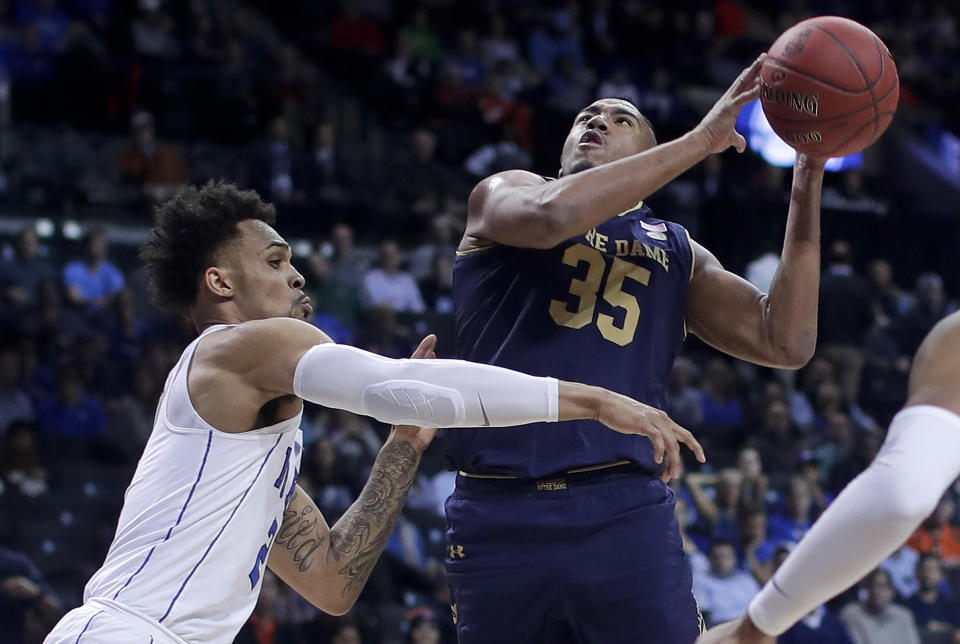Why Notre Dame will be the toughest bubble team for the committee to evaluate

The fate of college basketball’s most frequently discussed bubble team will probably be determined by the answer to one simple question.
How much will the selection committee take into account the rash of injuries Notre Dame endured this season when evaluating the Irish?
Notre Dame can no longer do anything to improve its chances after Duke decisively ended the Irish’s run in the ACC tournament on Thursday night with an 88-70 quarterfinal rout. That loss leaves Notre Dame with a season-long resume that doesn’t compare favorably with most other bubble teams at first glance.
A victory over Wichita State in the Maui Invitational title game is Notre Dame’s most notable win this season. The Irish also edged Syracuse in the Carrier Dome, thumped North Carolina State and Florida State at home and rallied past Virginia Tech during Wednesday’s second round of the ACC tournament.
[It’s bracket time! Sign up now to play Tourney Pick’em]
Notre Dame’s two quadrant 1 victories are the fewest among bubble teams in contention for the final at-large bids to the NCAA tournament. The Irish also have a trio of losses against sub-100 RPI teams, one to Ball State at home, another to Indiana on a neutral court and a third to Georgia Tech on the road.

The above graph plainly lays out how Notre Dame’s resume compares numerically to other bubble teams, and it’s not pretty for the Irish. At minimum, Oklahoma, Alabama, UCLA and Oklahoma State would all seem to have superior cases.
For Notre Dame to receive an NCAA tournament bid on Sunday, the Irish probably need the selection committee to consider that preseason All-American Bonzie Colson missed 15 games during ACC play and standout point guard Matt Farrell was either out or hobbled for seven. Notre Dame went 14-5 with both players available, 6-9 without Colson and 1-4 when neither played.
Farrell, Notre Dame’s second-leading scorer and best playmaker, rushed back from a bone bruise in his ankle with the Irish in the midst of a seven-game losing streak. Colson missed eight weeks after fracturing his foot in late December and only returned for the final week of ACC play.
When Notre Dame regained Colson and Farrell, the Irish knew they had to show the committee they were a different team at full strength. Not only did they have to win games, they needed to look impressive doing so.
While a narrow loss at top-ranked Virginia last Saturday was certainly a respectable outcome, Notre Dame probably didn’t achieve the style points it wanted at the ACC tournament. The Irish survived an unfathomably close opening-round game against last-place Pittsburgh, rallied from 21 down to beat Virginia Tech in the second round and then ran out of gas against a superior Duke team on Thursday.
Couple that with the fact that the Ball State and Indiana losses both came in December with Colson and Farrell healthy, and it leaves the committee with a tough call.
Should Notre Dame be judged on the entirety of its season-long resume or just the games in which it was at full strength? And did the Irish accomplish enough when they were healthy to definitively show that they’re NCAA tournament-caliber?
Those are two tough questions that the committee may spend awhile debating between now and Sunday afternoon.
– – – – – – –
Jeff Eisenberg is a college basketball writer for Yahoo Sports. Have a tip? Email him at daggerblog@yahoo.com or follow him on Twitter!



